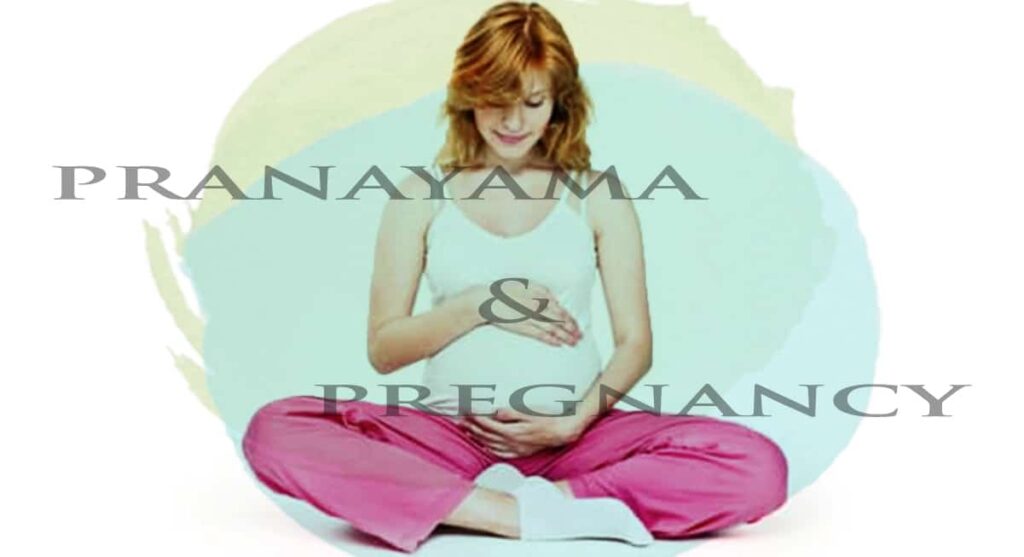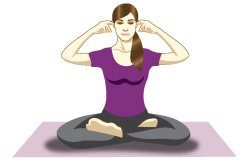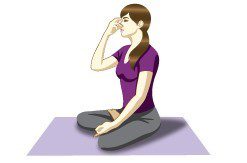
PRANAYAMA & PREGNANCY
What is yoga breathing?
Yoga breathing is a form of controlled deep breathing (pranayama). In sanskrit, “prana” means energy, and “ayama” means distribution of energy.
When we breathe in, we inhale oxygen, which our body needs to function. When we breathe out, we exhale carbon dioxide, a waste gas that our body doesn’t need. Most of us take quick, shallow breaths, which don’t benefit our body as much as deeper breaths.
Pranayama during pregnancy:
Pranayama is one of many breathing techniques used in yoga. Don’t take deep, quick, forceful breaths when you’re pregnant. Techniques such as bellow’s breath (bhastrika) and cleaning breath (kapalabhati) are not recommended in pregnancy.
Pranayama teaches you to breathe well, with an equal balance of nourishing oxygen inhaled and toxic carbon dioxide exhaled. This helps you to take good care of yourself and your baby.
Is it safe to practise pranayama during pregnancy?
Pranayama is one of many breathing techniques used in yoga. Though most are thought to be safe, make sure you practise anything that’s new to you with a trained instructor, who has experience of teaching pregnant women.
Focus on developing awareness of your breathing, rather than holding your breath. Yoga experts recommend that you shouldn’t hold your breath during yoga while you’re pregnant, because it could potentially reduce the amount of oxygen available to your baby. So it’s important to get the technique right.
Breathing quickly and forcefully could make you feel faint, light-headed and dizzy.
- If you have asthma, heart disease or suffer from breathlessness, check with your doctor or midwife before starting to do yoga deep breathing techniques.
- When you’re practicing deep breathing, listen to your body. Keep your breathing smooth and steady. Concentrate on slowly and calmly lengthening your out breath (exhalation), but don’t feel that you have to breathe in or out for a certain period of time.
How pranayama can help me?
Yoga experts believe that deep breathing:
- Improves the circulation of blood, which is good for you and your growing baby.
- Boosts the flow of oxygen that is supplied to your body and your baby.
- Helps your body to remove waste effectively.
- Relaxes you and helps to reduce stress.
There’s some evidence that yoga breathing and relaxation techniques may help you to cope during labour by calming you and distracting you from pain.
Learning how to breathe deeply now will help to prepare you for giving birth, because it helps you to master techniques for relaxing when you most need to.
Your body produces increasing amounts of adrenaline when you’re afraid, which can prevent the production of oxytocin, a hormone that helps labour along. Deep breathing in labour can help you fight the urge to panic when you feel the pain of contractions. Keeping your body relaxed means you can save your energy for when it is needed.
Can I do pranayama at home?
Yes, but if you’re a beginner, start by learning breathing techniques with a trained yoga instructor, ideally at an antenatal yoga class. Your instructor will show you the safest styles of breathing for pregnancy, as well as the best posture to adopt, depending on your bump size.
Once you’re confident about how to do deep breathing correctly, you can practise it at home, following these tips:
- Wait until three hours or four hours after a main meal, or a couple of hours after a light meal or snack.
- Choose a clean, calm place for your breathing practise. A well-aired room that isn’t too hot or cold is ideal. Or, depending on the weather and time of year, you may prefer to find a quiet spot in your garden or in a park.
- Choose a posture shown to you in the below images.
Pranayamas or breathing exercises during pregnancy:
Pranayamas release negative emotions like anger and frustration. They also help release stress, thus, keeping the mind calm and composed.
Bhramari Pranayama (Bee Breath)
- Helps regulate blood pressure.
- Relieves headaches.

Nadi Shodhan Pranayama (Alternate Nostril Breathing technique)
- Calms and relaxes the mind.
- Maintains body temperature.
- Enhances oxygen supply which helps with the baby’s growth.
After practicing these yoga moves and pranayamas, follow up with a session of meditation. It will help you relax deeply.
BLOGPOST # : DPYOGA0005
0 Comments